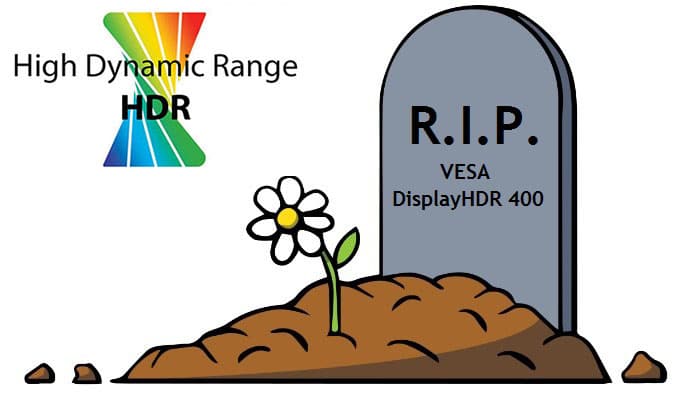If you look at the low end DisplayHDR 400 standard in any detail you realise that its requirements are very loose, and not really in line with providing any meaningful HDR experience. To earn the HDR 400 badge a display needs only offer:
- Peak brightness of at least 400 cd/m2 – this isn’t actually much beyond what a “normal” screen can offer, which are typically 300 – 350 cd/m2 anyway. It’s also nowhere near the higher peak luminance that the main HDR10 and Dolby Vision (and other) content is mastered to.
- Global dimming – this is where the entire screen is brightened or darkened all in one go depending on the viewed content. This is the same as the old “Dynamic Contrast Ratio” technologies of years gone by, which fell out of fashion about 5 years ago as no one really liked it or used it! Global dimming won’t improve the contrast ratio experienced on the screen at any given point in time, as the whole screen is being dimmed or brightened in one go. You are limited by the screens normal static contrast ratio, typically around 1000:1 for a TN Film or IPS panel, but typically around 3000:1 from a VA panel. The global dimming doesn’t help achieve any higher contrast ratio (or high dynamic range) compared to a normal screen though. Most people don’t like the appearance of dynamic contrast ratios either, and the way it changes the backlight brightness up and down.
- Colour space / colour gamut – they only require 95% of the ITU-R BT.709 colour space, basically 95% sRGB which again is the norm on nearly every display around now. No requirement to actually offer the wider colour gamut associated with HDR content and an improved viewing experience.
- Colour depth – there is a requirement for a true 8-bit colour depth, which at least rules out some of the 6-bit+FRC panels on the market. However, most normal screens nowadays are 8-bit anyway, so this doesn’t really require any improvement over those normal models. A 10-bit colour depth is really required to support the colours of HDR content, and that’s not a requirement for a screen to earn the HDR 400 badge.
As we said earlier, local dimming is VITAL for the production of an improved dynamic range from a display, and it is the lack of this which really hampers the HDR 400 certification level. Without local dimming of
any sort, we don’t feel a screen should be marketed as HDR to be quite honest. Global dimming doesn’t count.



